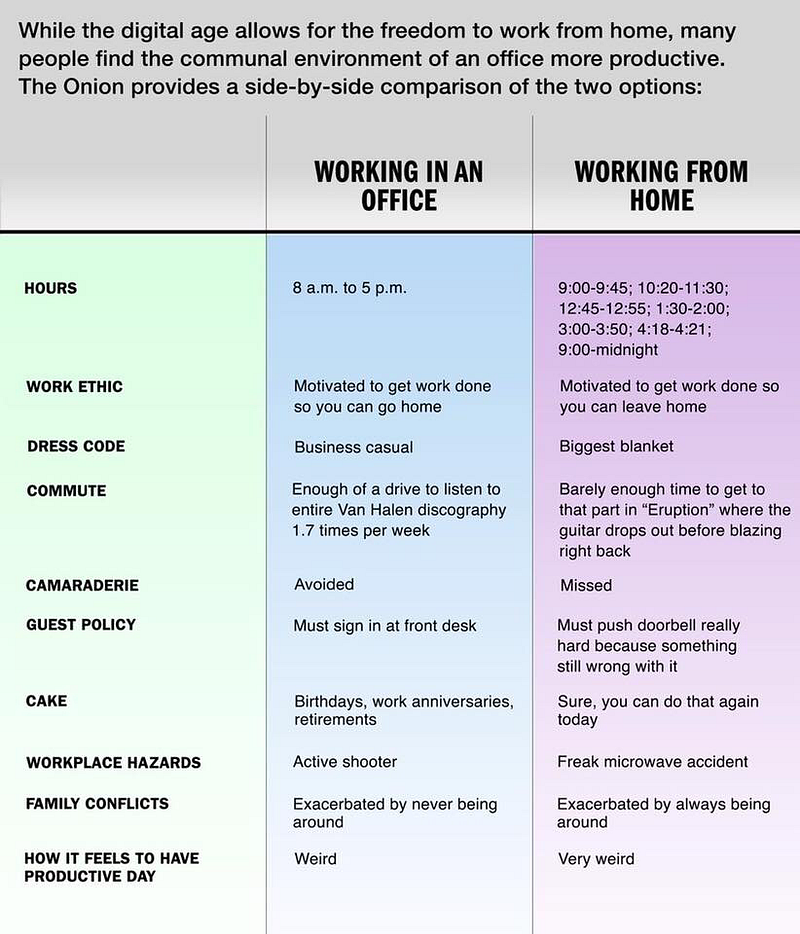

What I learned in My First Month Working Remotely in 4 Different Time ZonesAdvice from a Digital Nomad
During last month I made a million little discoveries of what it means to work somewhere with no team in the same place.
Let me be honest: I’ve never thought about becoming a remote worker / digital nomad / part of a distributed team.
What’s more, I’ve never dreamt about it; it wasn’t my life goal. I am fiercely interested in building a company culture, future of work and productivity but I’ve never considered a scenario of a backpack, a plane ticket and wifi dependance. I used to have a regular life set-up — apartment in green and quiet district of the city I adore (warm greetings for Warsaw!), job with responsibilities I liked and friends whom I now terribly miss. But all of that that has changed when in February I moved to Tallinn, Estonia.
I didn’t have a plan — I’ve known that I wanted to live in Estonia for a while now. But I didn’t want to look for a stationary job there — what if I didn’t like it? Or what if I DID! And what if I wanted to come back home or move to the next destination sooner? And I’m in the digital marketing space anyway, so my job is with the keyboard and mouse beneath my fingers.
I was nervous about taking off without a plan but decided to go for it anyways.
And here I am with one month of remote work in my life story.
Location independence turned out to be liberating.
I don’t think I have ever squeezed so much out of my days as during last month.

Home office rocks!
That was the biggest surprise for me, because I previously had the chance to work semi-remotely. I could work from home one day a week, especially if I had to concentrate on writing an ebook or another high-end piece of content. Or when I was sick or running some errands that required my presence at home. But that barely touched the surface of what remote working (full time) is all about.
I rapidly developed my skill set at self-organizing because of two things:
1. Deeper awareness that other people in my team rely on me to do my job.
Sunny California in the States, Poland, New Zealand — a fully distributed team. What’s more, no video conferencing, no Skype, virtual team workbench only.

Voice chat with working bench for the win
Understanding the idea of meaningful communication and the importance of getting work done pushed me to focus on one task at the time only. I had always struggled with that in the office (thank you very much, open space!) Jeff Sutherland’s rule “only one thing at the time” was finally possible to achieve.

source: Gerald Weinberg, Quality Software Management
The table above shows just how much time we lose on context switching. It hasn’t been correlated to open spaces (yet) but if you have ever worked in a place where people can just tap your shoulder any minute, you know how distracting and flow-breaking it can be.
Getting a strong feeling of “I have to prove that I’m a reliable remote worker” led me to create a workspace with minimal distractions (Spotify is my #1) and a focus on a “moving work forward”.

2. Excitement with a new city, country, set up.
Tallinn wasn’t a completely unknown town to me — I’ve been there before, mostly for the weekends — but the possibility of spending at least 3 months here pushed me to become a local as much as possible.
After every workday I had a purpose: go and see, go and check out, go out and meet.
That made my approach to planning more careful and efficient.

Kakerdaja Raba, sooo cold, but I love it!
But in the end, getting things done is not about the location — it’s about the team, and how you work with them.
My colleague, Justin, wrote more about what changes in mindset he had to go through to make the move to Los Angeles productive. Check out his LinkedIn Pulse to learn what deep insights he has to share (in this post I focus on more practical things so Justin’s piece is a comprehensive completion of it).
Getting There
So remote work became much less terrifying during the last month and while it’s still too early to brag about specific accomplishments, I can recommend some things which have proven to be helpful:
Zapier’s Guide to Remote Work. This is a huge chunk of wisdom by an experienced remote team. Almost 200 pages of unique knowledge. Chapters that helped me the most were about running a remote meeting (7), my productivity (10 and 11) and adjusting to different time zones (12). Highly recommended, especially if you are thinking about finding a remote job — Zapier’s team shows pictures of offices — that ,in my case, gave me confidence and the mentality: “yeah, I can do this!”
15Five blog is a marvellous source of news, trends and tidbits about remote work. I especially like their infographics about the future of work (like this one) or deep insight articles (like this one), that make me think more about being location independent, and how to make remote working an even more awesome experience.
World Time Buddy, a simple tool which makes sure that I’m not waking up any team mates on Slack or inviting them to a Bench in the middle of the night.
Escape app by FocusList is an app I feared to install, being convinced that Facebook is a villain here… But nope, it’s Spotify. This simple dashboard lets me know if I should take a break and come back to work more focused on a task.
Using Bench and the check in protocol Thanks to this simple method: our daily standups became productive, meaningful and supportive. I let my team know what emotional state I’m in when entering a meeting and defining that state enables me to be more “present” during the meeting.
Workhard Anywhere app. While I enjoy working from home (commuting kills!), sometimes it’s nice to change my surroundings. This app helped me find appropriate and productive spots to work from.
When nothing is under control
But remote work and being a new digital nomad also has its disadvantages. Ignoring poor wifi in some places, I tracked down a few things which are challenging:
- lack of clear office hours. It’s a rookie mistake, but still, it’s easy to trip on it. There’s no one leaving, nobody says goodbye and there’s always someone active on Slack. It’s easy to tackle that issue, but still worth a post-it “always leave work on time.”

source: imgur
- putting more effort into focusing on efficiency and fighting with distractions. (getting into “work mode”). I believe that it’s a psychological thing — I was so afraid that everything at home will be distracting me that worrying about that became the biggest distraction. In the end it’s just a matter of time and attitude towards your new situation.
I’m definitely happy that I can participate in remote work and the location independence trend, especially because I honestly believe that it’s the future of work.
What’s next
It keeps me thinking “what’s next?” For a short term perspective, I’m considering checking out coworking spaces: mostly in order to exchange war stories about online meetings and working in distributed teams. Now, back to reading “Crossing the Chasm” by Geoffrey A. Moore, which has been waiting far too long already. Happy to listen to your early (or not) experience with remote work — find me on Twitter (where I tend to post too many gifs).
This post was first published on Medium. It has been republished here with the author’s permission
